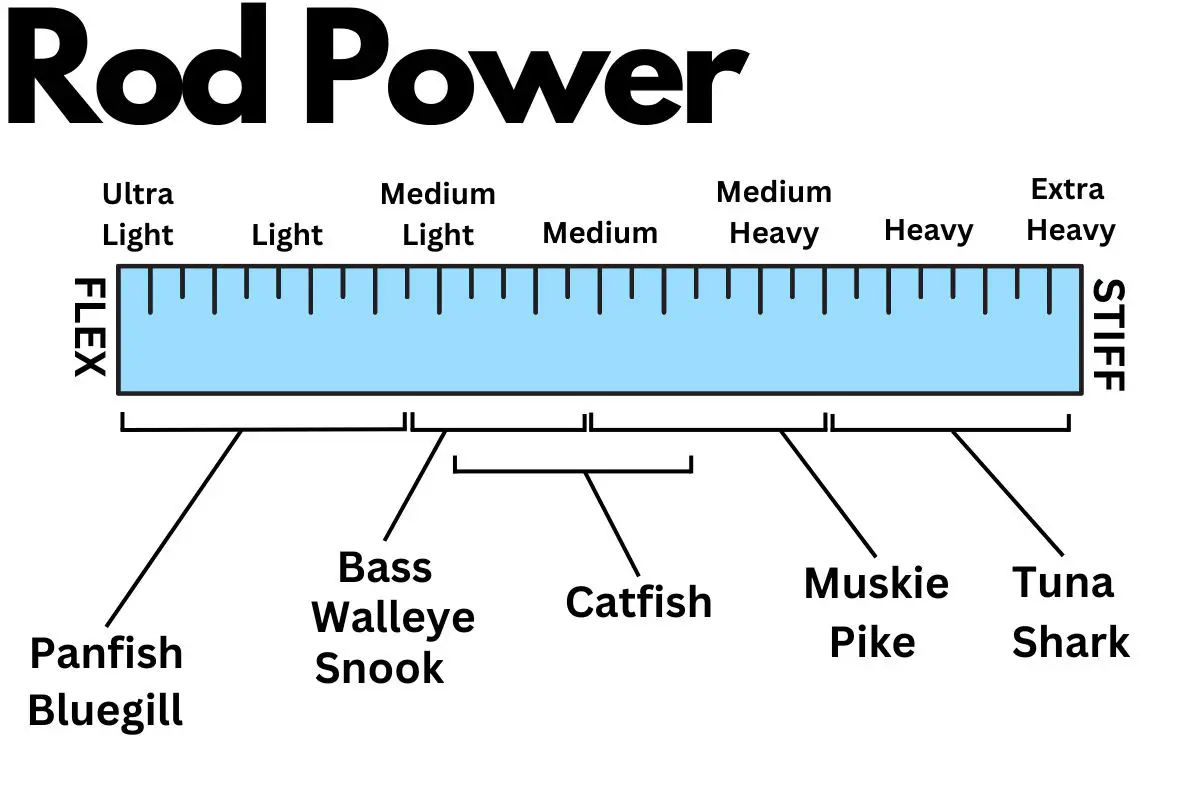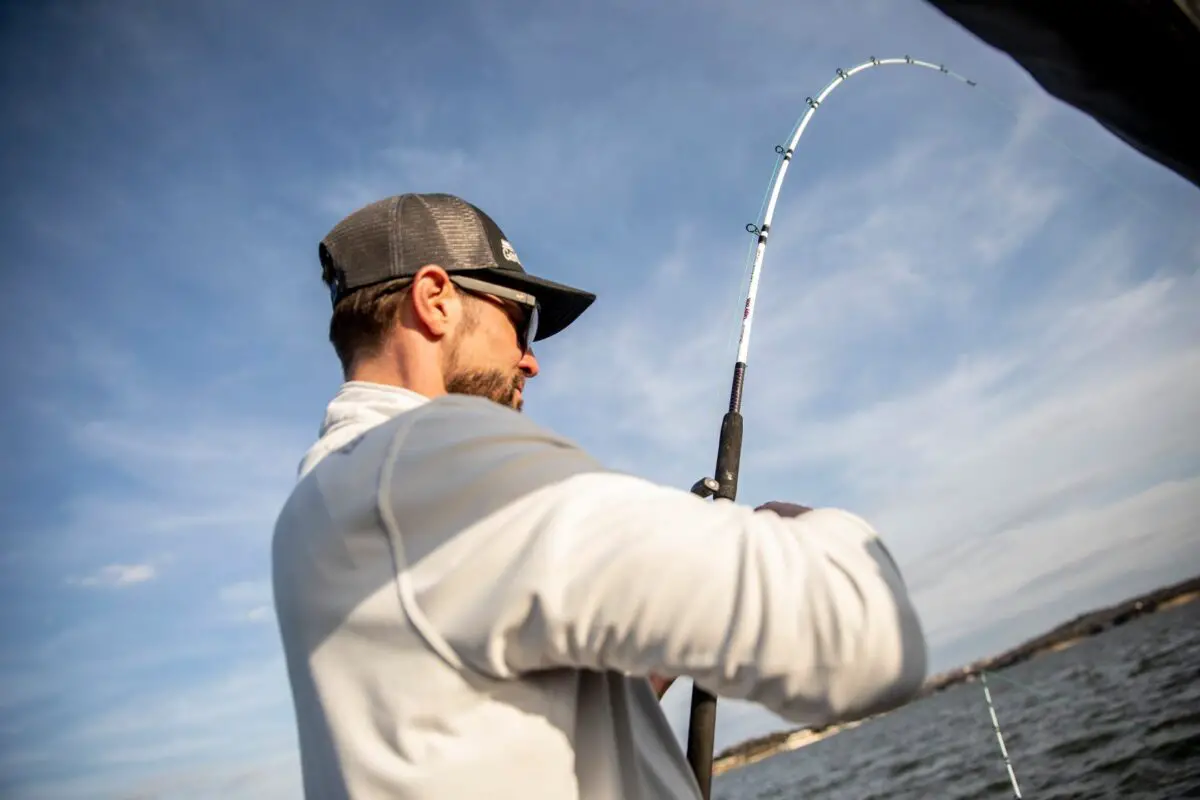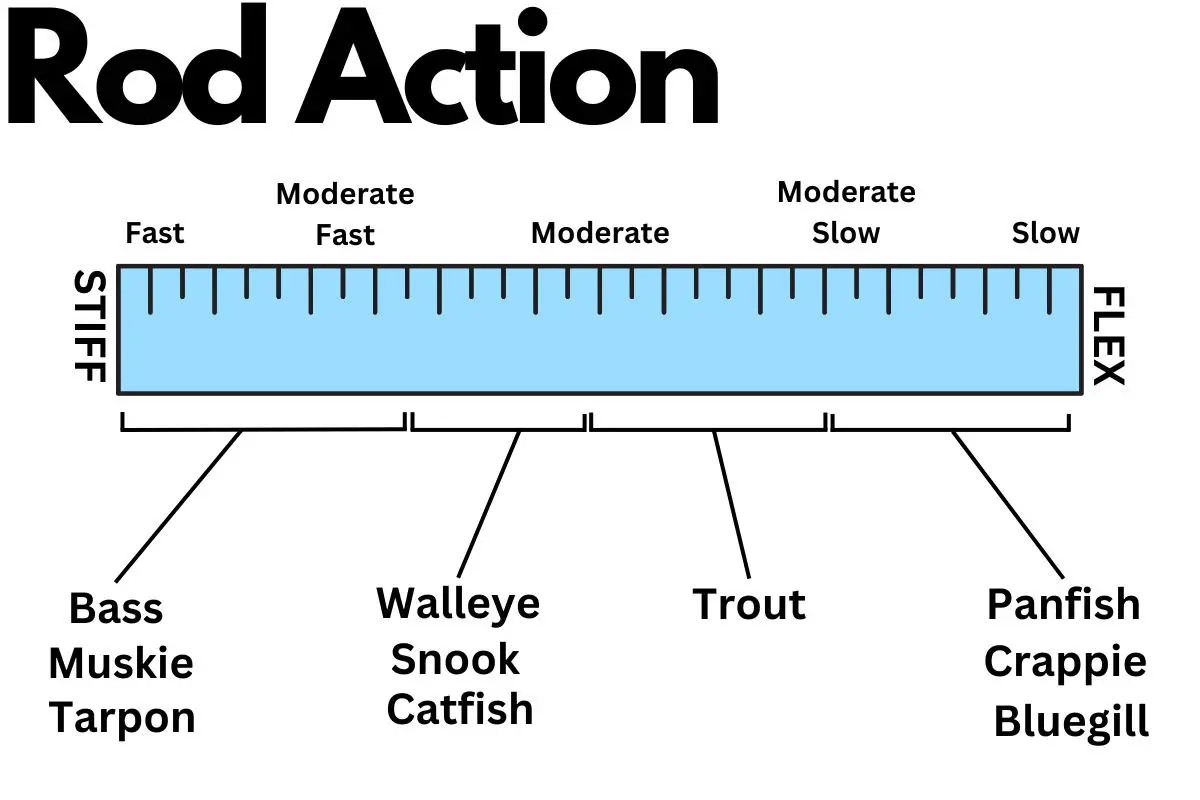The number of fishing rods you should own large depends on the kind of fishing you plan on doing. For versatility, owning five rods: a casting rod, a spinning rod, a surf rod, an ice fishing rod, and a fly rod provides good coverage.
In truth, it’s like asking how many pairs of shoes you should have – it depends on your needs and how you fish. In my experience, having a range of rods for different types of fishing is key.
Let’s delve into the types of rods that are crucial for a well-rounded collection.
Table of Contents
Different Types of Rods
- Boat rod: Often made from graphite or fiberglass, these sturdy rods are great for offshore trolling and deep dropping.
- Surf rod: With lengths up to 14 feet, surf rods are perfect for casting baits far into the surf. Their robust guides can handle heavy lines and large baits.
- Jigging rod: A shorter, more robust rod, perfect for vertical jigging. They have powerful guides and butt sections.
- Trolling rod: Specialized for dragging bait through the water from a moving boat, these rods are typically longer to act as outriggers.
- Ice fishing rod: Small and portable, these rods are perfect for the unique challenges of ice fishing. They’re designed to handle the stress of pulling fish through the ice despite their size.
- Fly rod: Delicate, lightweight, and designed for finesse, fly rods are used to mimic the movement of insects on the water surface. They are generally made from graphite.

Table of Fishing Scenarios and Their Ideal Rod Type
| Scenario | Ideal Rod |
|---|---|
| Bass Fishing | Baitcasting Rod |
| Offshore Trolling | Trolling Rod |
| Deep Dropping | Boat Rod |
| Surf Fishing | Surf Rod |
| Trout Fishing | Fly Rod |
| Panfish | Ultra Light Spinning Rod |
| Ice Fishing | Ice Fishing Rod |
| Jigging | Jigging Rod |

Why Do Bass Fishermen Have So Many Rods?
Bass fishing is unique in its complexity and various techniques to catch these aggressive fish, often leading anglers to accumulate multiple rods. Let me break down a few reasons why bass fishermen tend to have so many rods.
Bass fishing involves a variety of techniques, each requiring different rods. Techniques like flipping and pitching, drop shotting, and crank baiting require different rods with unique properties. A heavy, fast-action baitcasting rod is excellent for flipping, while a lighter, more sensitive rod is better for drop shotting. Owning multiple rods allows bass fishermen to switch between techniques quickly.
Bass anglers often use different lure setups simultaneously, and having separate rods rigged with different lures can save time and allow for quick adaptation to changing conditions. For example, one rod might have a topwater lure while another is rigged with a plastic worm.
Instead of re-rigging a single rod whenever they want to switch lures, bass fishermen can quickly pick up a different rod.
Bass are sensitive to changes in weather and water conditions. A cold front, rising water temperature, or even changing wind direction can alter a bass’s behavior. Having multiple rods allows an angler to quickly adapt to these changes, presenting different lures at varying depths and speeds.
Some bass anglers like to specialize in specific techniques and thus have rods designed explicitly for those techniques. Some may prefer deep cranking and thus have several rods with the perfect action and length for that technique. Others might have a collection of rods for finesse techniques.

How Many Rods Should I Take on a Fishing Trip?
For a quick outing, one or two rods should be enough. However, if you’re planning a multi-day fishing trip or a vacation that revolves around fishing, bringing more rods is a good idea. This will allow you to adapt to different fishing conditions and ensure you have a backup in case a rod breaks or gets lost.
The size of your vehicle or the nature of your journey will dictate how many rods you can bring. If you’re backpacking or biking, one compact, versatile rod is likely all you can manage. If you’re traveling by car or boat, you can bring many rods without issue.
If you’re fishing with friends or family, you might need to bring more rods to ensure everyone has one. However, if everyone is bringing their own gear, this is less of a concern.
I generally advise taking at least two rods on any fishing trip.
Why two?
This gives you a backup if something happens to one of your rods. Also, you can rig each rod differently, quickly switching between setups without having to re-tie your lures or bait. This has saved me a lot of time on the water, and I’m sure it will for you too!
There is nothing worse then heading home early because your rod tip broke.

Factors to Determine How Many Fishing Rods You Should Have
Determining the number of fishing rods you should have involves several factors. Let’s break these down in detail:
Type of Fishing
This is one of the main factors to consider. Different types of fishing require different rods. For example, if you’re primarily a saltwater angler, a surf rod, a boat rod, and a jigging rod might be essential.
On the other hand, freshwater anglers might prefer a spinning rod for panfish and a baitcaster for bass.
An ice fishing rod is a must for the adventurous angler who braves the cold.
Targeted Species
The species you’re targeting will largely determine the rod you need. Are you targeting smaller species like crappies and bluegills? A light action spinning rod is suitable.
A heavier action baitcasting or trolling rod might be better if you’re after larger species like pike, salmon, or bass.
Fly rods are ideal for trout or salmon fishing, where the delicacy of presentation is key.

Fishing Techniques
Different fishing techniques require different rods. A faster action rod is more suitable if you’re into topwater fishing.
Jigging or trolling? You’d need a rod that can handle these specific techniques. If you love fly fishing, a fly rod is absolutely necessary.
Regulations
Depending on where you fish, there may be restrictions on the number of rods you can use at once. Make sure you understand the local regulations to avoid any legal issues.
Storage and Transportation
Let’s face it: rods are long and difficult to store and transport. If you’re short on space or usually fish on foot or bike, having one or two multipurpose rods might be the best option.
However, if you’ve got a spacious garage and a vehicle to transport them, why not have a rod for every occasion?
Frequency of Fishing
A couple of versatile rods might suffice if you’re an occasional angler. But if you’re out on the water every weekend, or you’re a professional, you’ll need a wider variety of rods to suit different conditions and techniques.
Budget
This is the final and quite crucial factor. Fishing rods range from budget-friendly options to expensive high-end models. It’s important to consider how much you’re willing or able to spend on your rods.

Advantages of Using More Than One Fishing Rod
Having multiple fishing rods allows you to adapt to different fishing conditions and techniques quickly. You can switch between different baits or lures without having to re-rig your line. A backup in case of breakage or loss can save your fishing day.
So, how many fishing rods should I have? The answer is as unique as each angler and their fishing journey.
However, a well-rounded collection of five – a casting rod, a spinning rod, a surf rod, an ice fishing rod, and a fly rod – should have you covered for most scenarios.
